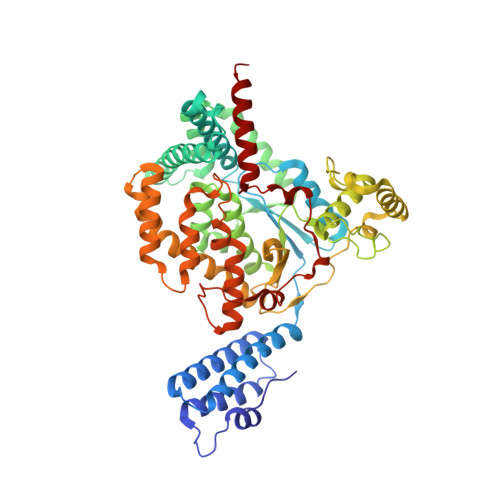Structural Basis for the Function of Clostridium Difficile Toxin B.
Reinert, D.J., Jank, T., Aktories, K., Schulz, G.E.(2005) J Mol Biol 351: 973
- PubMed: 16054646
- DOI: https://doi.org/10.1016/j.jmb.2005.06.071
- Primary Citation of Related Structures:
2BVL, 2BVM - PubMed Abstract:
Toxin B is a member of the family of large clostridial cytotoxins which are of great medical importance. Its catalytic fragment was crystallized in the presence of UDP-glucose and Mn2+. The structure was determined at 2.2 A resolution, showing that toxin B belongs to the glycosyltransferase type A family. However, toxin B contains as many as 309 residues in addition to the common chainfold, which most likely contribute to the target specificity. A superposition with other glycosyltransferases shows the expected positions of the acceptor oxygen atom during glucosyl transfer and indicates further that the reaction proceeds probably along a single-displacement pathway. The C1'' donor carbon atom position is defined by the bound UDP and glucose. It assigns the surface area of toxin B that forms the interface to the target protein during the modifying reaction. A docking attempt brought the known acceptor atom, Thr37 O(gamma1) of the switch I region of the RhoA:GDP target structure, near the expected position. The relative orientation of the two proteins was consistent with both being attached to a membrane. Sequence comparisons between toxin B variants revealed that the highest exchange rate occurs around the active center at the putative docking interface, presumably due to a continuous hit-and-evasion struggle between Clostridia and their eukaryotic hosts.
Organizational Affiliation:
Institut für Organische Chemie und Biochemie, Albert-Ludwigs-Universität, Albertstr. 21, 79104 Freiburg im Breisgau, Germany.



















